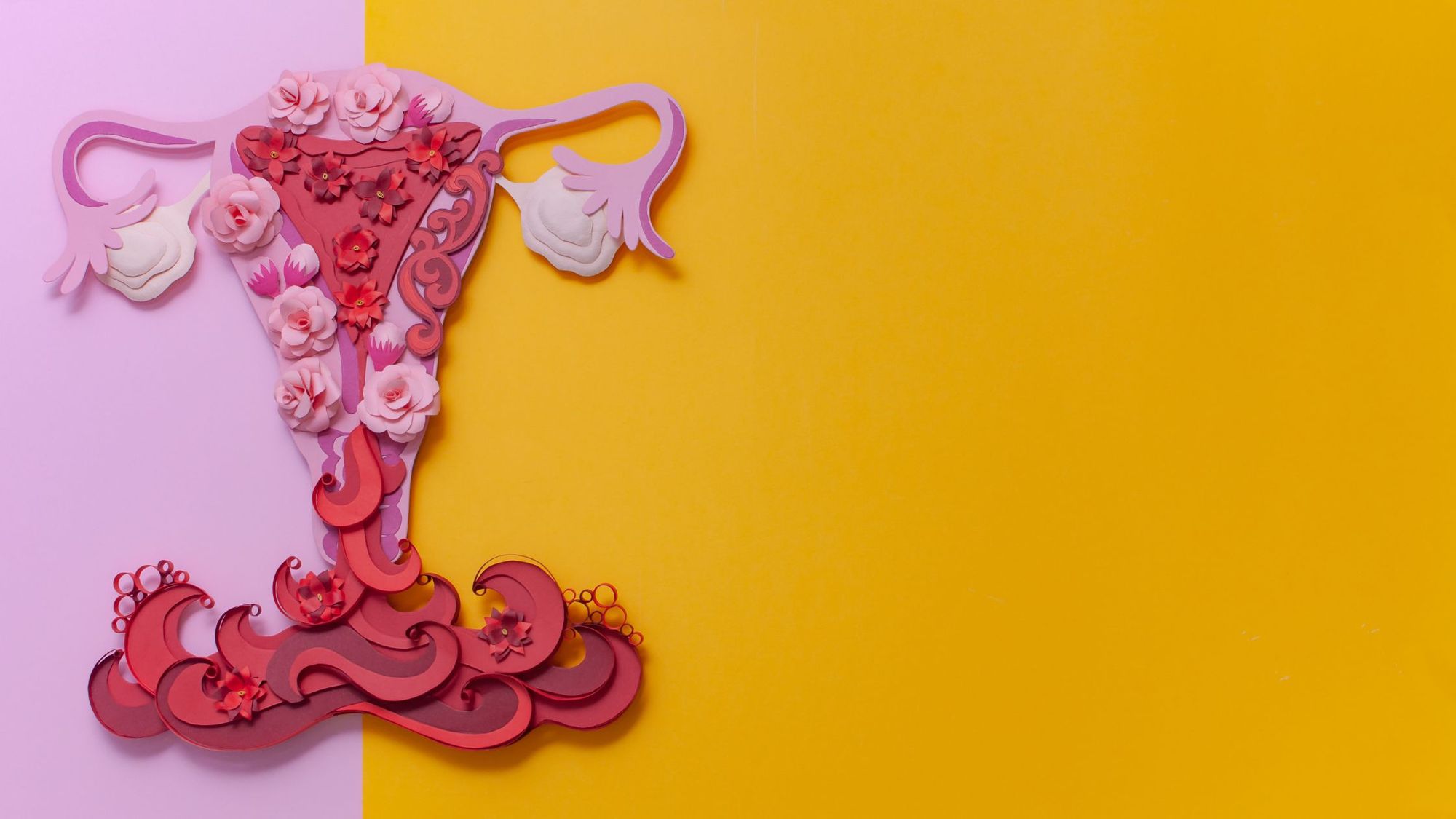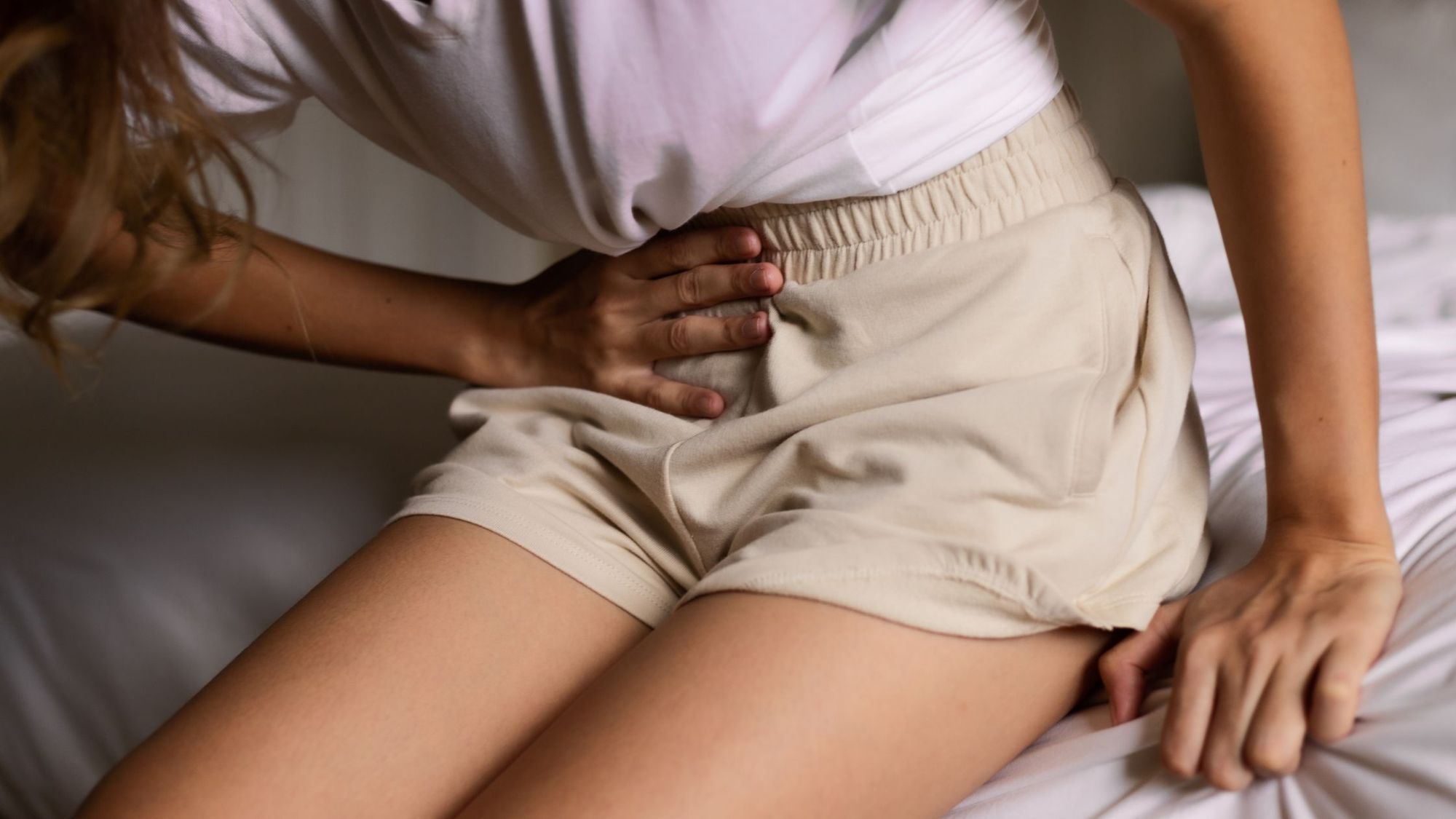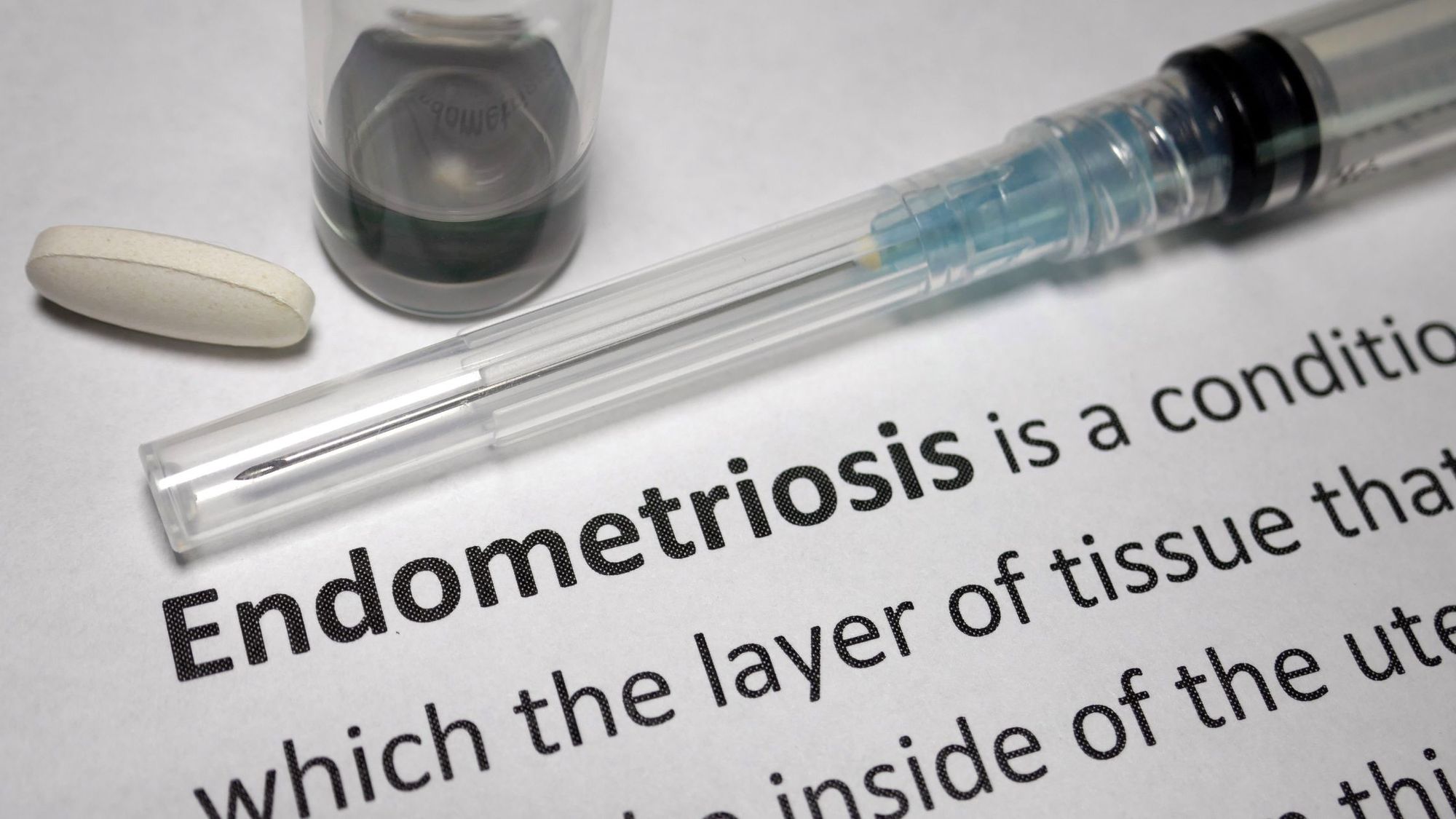
Endometriosis has gained increased attention in recent years, and so have endometriosis treatment options. Women are unlearning the misguided belief that we are simply meant to “put up with” menstrual pain and menstrual cycle related problems, and that we exaggerate our pain perception. Beyond removing shame and stigma, what women really need is better endometriosis treatment options, with fewer side effects and greater efficacy. Fortunately, new research suggests that targeting the inflammatory signaling molecule interleukin-8 (IL-8) may be among the most effective endometriosis treatment options available.

What Exactly is Endometriosis?
Endometriosis is a debilitating condition where uterine tissue grows outside of the uterus. Somewhere between 10-15% of women in their reproductive years have endometriosis, or approximately 190 million women worldwide. Endometriosis is more than just severe period pain, with chronic pelvic pain (outside of menstruation), abnormally heavy bleeding, and infertility being common consequences.
To make things worse, the lesions of uterine tissue can affect the function and integrity of other tissues and organs in the female body. They can create adhesions between different tissues, and even become scar tissue. This is driven by both estrogen and inflammation, but conventional treatment has often only focused on hormone therapy.

New Endometriosis Treatment Options: Could Antibody Shots Be the Answer?
In this new research into endometriosis treatment via antibody shots, an antibody targeting IL-8 was injected into monkeys with endometriosis. This antibody was tweaked to be reusable so they only had to inject it once every month, as it could bind to IL-8 multiple times. If human clinical trials turn out to be successful, this may mean one less daily medication or supplement. Unlike hormonal therapies, you wouldn’t have to worry about IL-8 antibodies affecting your fertility if you want children, either.
Although it was an animal study, the results may be highly relevant to humans. They chose the cynomolgus macaque species, which are biologically very similar and develop endometriosis with almost the same type of pathology. Over time, the lesions shrank, including scar tissue and adhesions. These results are amazing, considering that surgery is the only recognized method of reducing adhesions and scarring.
However, there’s one catch. The antibody was an engineered protein, not a natural substance. It’s common for foreign proteins in immunotherapies to trigger an immune response, in a tragic case of irony. Even CAR-T cell therapies for leukemia, a disease that decimates the immune system through both its pathology and traditional treatment, show far better results when the anti-cancer antigen is only made from human genes.
Natural Alternatives to Help You Take Back Control of Your Symptoms
Whether or not this anti-IL-8 antibody succeeds in human trials, or provides lasting benefit, there are natural solutions and natural endometriosis treatment options for reducing IL-8 and other inflammatory signals. There are multiple inflammatory and hormonal pathways involved in endometriosis, and as natural interventions typically have fewer side effects, a holistic, integrative path is best. I describe them further in my book, Infla-Menses, which is available from the Lulu Press website.
Is There an Endometriosis Diet?
There isn’t one definitive endometriosis diet. In general, the best dietary patterns focus on relieving inflammation in the body and reducing your exposure to xenoestrogens. Luckily, there are many known anti-inflammatory foods. Regardless of what you eat, we recommend avoiding heating food in plastic, and choosing organic products wherever possible. Some dietary changes that can benefit women with endometriosis are:
Essential Dietary Antioxidants
Increasing dietary antioxidants through consuming a wide range of unprocessed plant foods, alongside oily fish. Vitamins C, D, E, and B-group vitamins such as folic acid are associated with lower rates of developing endometriosis. Food sources, including berries, bell pepper, and citrus; oily fish; avocados and nuts; and wholegrains, may be more effective than supplementation. Additionally, Brazil nuts are a great source of selenium, which could increase the effectiveness of other antioxidants by assisting glutathione production, the “master” antioxidant.
Reducing Red Meat Intake
US research shows that two servings a day of red meat can increase your risk of endometriosis by 56%, compared to only eating it once per week or less. Key pro-inflammatory prostaglandins are made from omega-6 fatty acids, with their sources including (conventional, grain-fed) red meat. These worsen period pain and chronic pelvic pain. Both increasing omega-3 fats and reducing omega-6 fatty acids are necessary, as their ratio affects the severity of inflammation.
The Low-FODMAP Diet
A low-FODMAP diet, developed in my country, Australia, may be helpful if you also have IBS. In fact, women with endometriosis have double or even triple the rate of IBS, and both conditions partly stem from chronic inflammation. FODMAPs are short-chain, indigestible forms of carbohydrates that feed intestinal bacteria. A low-FODMAP diet that temporarily restricts these reduces the overgrown bacterial populations that cause gas, bloating, constipation, diarrhea, and inflammation. Women with endometriosis and IBS are more likely to find benefit, with a 72% chance of significant benefit compared to 40% if you have IBS alone.
Going Gluten-Free
Some of the benefits of a low-FODMAP diet may come from its exclusion of gluten-containing grains. In fact, one trial found that 75% of women enjoyed a significant reduction in symptom severity after going gluten-free. They also saw improvements in overall quality of life. Quitting gluten can reduce interferon-gamma and interleukin-6, two other inflammatory signals seen in both endometriosis and celiac disease.
Natural Anti-Inflammatories
There are a number of natural anti-inflammatory remedies that can reduce IL-8, or complement any future anti-IL-8 therapy through other pathways.
N-Acetyl-Cysteine
Perhaps the most impressive results in clinical research come from N-acetyl-cysteine (NAC). This contributes to the production of glutathione, a powerful antioxidant that aids liver detoxification. In a clinical trial, 92 women with endometriosis took either 600mg of NAC three times daily or a placebo for three months. The results? Women taking NAC had slight reductions in the size of their endometriotic cysts, and the vast majority, 24, cancelled their next surgery. Those in the placebo group saw significant increases in cyst size and only one postponed her next operation to burn off some of her lesions.
N-acetyl-cysteine may tame the production of IL-8, even in the face of tissue damage. Lab research demonstrated that NAC can steer stem cells away from producing high levels of IL-8, with treated cells only producing 10% of the IL-8 made by control cells. While healthy stem cells can be anti-inflammatory, the control cells’ IL-8 generation can contribute to tissue breakdown and sustain inflammation. Endometriotic lesions appear to recruit mesenchymal stem cells, so reducing IL-8 may keep them on the right pathway.
Polyphenols
Polyphenols are a “non-essential” class of antioxidant nutrients, found in both foods and supplements. They’re also anti-inflammatory, turning down the signaling pathways that allow endometrial cells to survive outside the uterus. Polyphenols with potential benefit in endometriosis include:
- Curcumin, the most-studied phytochemical in turmeric, and a star in my book, Infla-Menses. It can inhibit the inflammatory pathways that keep stray uterine cells alive, and prevent them from maintaining their own blood supply. Clinical research shows that curcumin can reduce overall pain, alongside pain when using the bathroom.
- Quercetin, a widespread flavonoid found in many fruits and vegetables, including red onions. Even a study involving women with stage IV endometriosis found significant benefit, with reduced pain and lesion size.
- Resveratrol, the antioxidant infamous for its levels in certain varieties of red wine. Although its evidence on any anti-aging, regenerative effect is mixed, resveratrol may reduce the overgrowth seen in endometriosis. A small study combining resveratrol with conventional medication found that 82% of women had a total resolution of period pain, and much less pain overall. Others demonstrated both symptomatic improvement and lower levels of signaling chemicals responsible for inflammation and blood vessel growth.
Hysterectomy as a Permanent Solution to Endometriosis?
It’s important to remember that a hysterectomy is a major surgery, and means the permanent loss of your reproductive organs. It’s best to leave this as an absolute last resort, but if you need that last resort, a permanent solution as your endometriosis treatment option sounds tempting. There are as many viewpoints on hysterectomy for endometriosis as there are physicians and holistic health practitioners who specialize in it, but what does the research say?
One study with an average follow-up time of six years, where some women had hormone replacement therapy (HRT) to compensate for the removal of their ovaries, only found a 3% recurrence rate. This was resolved after they stopped HRT. As estrogen has many beneficial effects on the body, it’s best to only stop if you do suffer from a recurrence. On the other hand, leaving the ovaries intact is linked with a high relapse rate.
I Have Endometriosis: How Can I Start Taking Back Control of My Health?
Overall, a diet rich in a variety of antioxidants and omega-3 fatty acid sources, and low in red meat, xenoestrogens, and eliminating “trigger” foods you may be intolerant to, is best for endometriosis. Appropriate supplementation can help as well, but every woman responds uniquely.
If you don’t know where to start, a Premium CircleDNA test helps you uncover both your genetic risk factors and areas of least concern. With a professional consultation included with your DNA test results, you can get started on the right foot.
References:
- Gołąbek, A, et al. Polyphenols as a Diet Therapy Concept for Endometriosis—Current Opinion and Future Perspectives. https://www.ncbi.nlm.nih.gov/pmc/articles/PMC8074087/
- Lang, K. Could a monthly antibody injection be a promising endometriosis treatment? https://www.medicalnewstoday.com/articles/could-a-monthly-antibody-injection-be-a-promising-endometriosis-treatment
- Myers, RM, et al. Humanized CD19-Targeted Chimeric Antigen Receptor (CAR) T Cells in CAR-Naive and CAR-Exposed Children and Young Adults With Relapsed or Refractory Acute Lymphoblastic Leukemia. https://www.ncbi.nlm.nih.gov/pmc/articles/PMC9851702/
- Habib, N, et al. Impact of lifestyle and diet on endometriosis: a fresh look to a busy corner. https://www.ncbi.nlm.nih.gov/pmc/articles/PMC9528818/
- Bahat, PY, et al. Dietary supplements for treatment of endometriosis: A review. https://www.ncbi.nlm.nih.gov/pmc/articles/PMC8972862/
- Porpora, MG, et al. A promise in the treatment of endometriosis: an observational cohort study on ovarian endometrioma reduction by N-acetylcysteine. https://pubmed.ncbi.nlm.nih.gov/23737821/
- Xiong, L, et al. In vitro N-acetyl-L-cysteine promotes proliferation and suppresses interleukin-8 expression in adipose-derived stem cells. https://pubmed.ncbi.nlm.nih.gov/22936379/
- Tanmahasamut, P, et al. Menopausal hormonal therapy in surgically menopausal women with underlying endometriosis. https://pubmed.ncbi.nlm.nih.gov/34783284/





